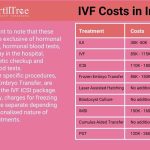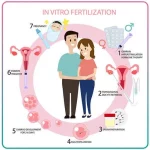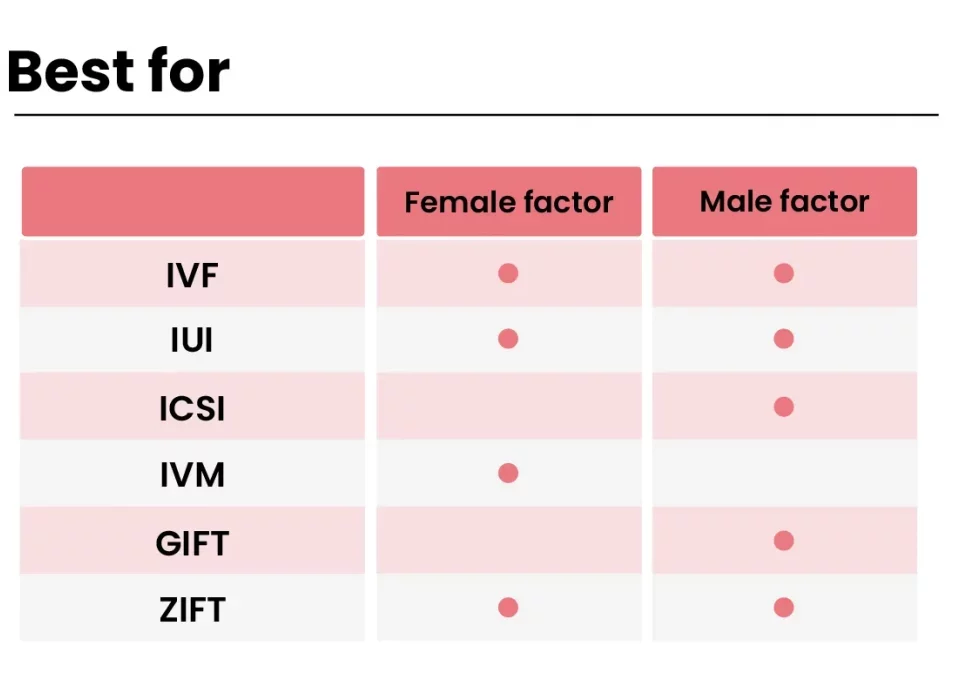
How Expensive Is IVF? A Deep Dive into Costs, Options, and What You Need to Know
April 2, 2025
What Does IVF Mean? Your Ultimate Guide to Understanding In Vitro Fertilization
April 2, 2025How Much Is IVF Treatment? A Deep Dive Into Costs, Options, and What You Need to Know

How Much Is IVF Treatment? A Deep Dive Into Costs, Options, and What You Need to Know
In vitro fertilization (IVF) is a lifeline for many hoping to build a family, but the price tag can feel like a giant question mark. If you’re wondering how much IVF treatment costs, you’re not alone—it’s one of the first things people ask when they start this journey. The truth is, the answer isn’t simple. Costs vary widely depending on where you live, your specific needs, and even the clinic you choose. But don’t worry—this article will break it all down for you, with real numbers, fresh insights, and practical tips to help you plan. We’ll go beyond the basics, digging into hidden expenses, new trends, and ways to make IVF more affordable, so you can feel confident moving forward.
The Big Picture: What’s the Average Cost of IVF?
IVF isn’t cheap, but knowing the ballpark can help you prepare. In the United States, the average cost for one IVF cycle hovers between $12,000 and $25,000. That’s a wide range, right? The lower end—around $12,000—usually covers the essentials like monitoring, egg retrieval, and embryo transfer. The higher end, closer to $25,000, often includes extras like medications, genetic testing, or advanced procedures.
Why such a gap? It’s all about what’s included. A basic cycle might not cover the fertility drugs (which can add $3,000-$5,000) or lab fees for freezing embryos. Meanwhile, a deluxe package might bundle everything, from initial consults to follow-up care. The American Society for Reproductive Medicine (ASRM) backs this up, noting that a single cycle’s cost depends heavily on individual factors like age, health, and clinic pricing.
Globally, it’s a different story. In the UK, a cycle might run $6,000-$8,000, thanks to some public funding options. In countries like India or Mexico, where medical tourism is booming, you could pay as little as $3,000-$5,000. But before you book a flight, we’ll unpack why cheaper isn’t always better.
Breaking Down the Costs: What Are You Actually Paying For?
IVF isn’t one flat fee—it’s a collection of smaller charges that add up fast. Here’s a breakdown of what you’re likely to see on your bill:
Initial Consultations and Tests
Before you even start, clinics need to check your fertility stats. Expect to spend $200-$500 on consults, plus $1,000-$2,000 for blood tests, ultrasounds, and semen analysis. These steps figure out if IVF is right for you and what tweaks your treatment might need.
Medications
Fertility drugs are a big chunk of the cost—anywhere from $3,000 to $5,000 per cycle. These meds stimulate your ovaries to produce multiple eggs, and prices depend on dosage and brand. Some folks need more, especially if they’re over 35, since egg quality drops with age.
The Main Event: Egg Retrieval and Embryo Transfer
This is the core of IVF, costing $6,000-$10,000. It covers the procedure to collect your eggs, fertilize them in a lab, and transfer the embryo back to your uterus. Anesthesia and lab fees are usually baked in, but double-check with your clinic.
Extras That Add Up
- Genetic Testing (PGT): Screening embryos for abnormalities can cost $1,000-$3,000, plus lab fees. It’s optional but popular for older parents or those with genetic concerns.
- Freezing Embryos: Got extras? Storing them runs $500-$1,000 upfront, then $300-$600 a year.
- Intracytoplasmic Sperm Injection (ICSI): If sperm needs a boost, this adds $1,000-$2,000.
Hidden Costs You Might Miss
Travel, time off work, and emotional support (like counseling) don’t show up on clinic invoices but hit your wallet just the same. For example, if your clinic’s an hour away, gas and parking could tack on $100-$200 per cycle.
Here’s a quick table to visualize it:
| Item | Cost Range | What’s Included |
|---|---|---|
| Consults & Tests | $1,200 – $2,500 | Exams, bloodwork, imaging |
| Medications | $3,000 – $5,000 | Hormones to boost egg production |
| Egg Retrieval/Transfer | $6,000 – $10,000 | Surgery, lab work, embryo placement |
| Genetic Testing | $1,000 – $3,000 | Embryo screening (optional) |
| Embryo Freezing | $500 – $1,000 + yearly fees | Storage for future use |
Why Does IVF Cost So Much?
IVF’s price tag isn’t random—it reflects the high-tech, high-skill process behind it. Specialized doctors, cutting-edge labs, and pricey medications all play a role. Plus, success isn’t guaranteed. Only about 30-40% of cycles lead to a live birth for women under 35, per the CDC, and that drops as you age. Clinics charge what they do because they’re covering overhead while banking on multiple attempts for some patients.
But here’s a twist: costs are starting to shift. A 2023 study from the National Institutes of Health (NIH) found that automation—like robotic embryo handling—could cut lab expenses by up to 20% in the next decade. That’s not widespread yet, but it’s a glimmer of hope for future savings.
How Many Cycles Will You Need?
One cycle might not be enough, and that’s a game-changer for your budget. Success rates depend on age, health, and luck. Here’s what the data says, based on 2021 stats from the Society for Assisted Reproductive Technology (SART):
- Under 35: 50% chance of a live birth per cycle
- 35-37: 40% chance
- 38-40: 25% chance
- Over 40: 10-15% chance
Most people need 2-3 cycles, pushing total costs to $24,000-$75,000. If you’re over 40 or have conditions like endometriosis, it could take more. Planning for multiple rounds upfront can save you from financial shock later.
Quick Quiz: How Many Cycles Might Clarity: How many IVF cycles do you think you’d be willing to try, based on your budget?
- A) 1-2 cycles ($12,000-$50,000)
- B) 3-4 cycles ($36,000-$100,000)
- C) As many as it takes (sky’s the limit!)
Share your answer in the comments—it’s anonymous, and I’d love to hear your thoughts!
Insurance and IVF: What’s Covered?
Insurance is a mixed bag with IVF. In the U.S., only 19 states have laws mandating some fertility coverage, and even then, IVF isn’t always included. If you’re lucky, your plan might cover diagnostics or meds but stop short of the full procedure. A 2024 survey by Resolve: The National Infertility Association found that 60% of patients pay out of pocket entirely.
Outside the U.S., it’s different. The UK’s National Health Service (NHS) offers up to 3 free cycles if you meet strict criteria (like being under 40). Canada’s coverage varies by province—Ontario chips in for one cycle, while others leave you on your own. Check your policy or call your provider to confirm what’s covered. Pro tip: Ask about “infertility treatment” specifically—some plans hide it under vague terms.
Creative Ways to Pay for IVF
Sticker shock doesn’t mean game over. People get resourceful, and you can too. Here are some options:
Financing and Loans
Clinics often partner with lenders like Prosper or CapexMD, offering IVF-specific loans with 5-10% interest rates. Monthly payments might be $300-$500, stretching costs over years. Compare terms—some have no prepayment penalties.
Grants and Discounts
Nonprofits like BabyQuest or the Tinina Q. Cade Foundation offer grants up to $15,000. Clinics sometimes discount multiple cycles (e.g., $20,000 for 2 rounds) or provide refunds if you don’t conceive—though read the fine print.
Crowdfunding
Platforms like GoFundMe see tons of IVF campaigns. A 2024 analysis of 500 campaigns showed an average raise of $8,000—real money from friends, family, or kind strangers. Share your story with heart, and it could lighten the load.
Tax Breaks
In the U.S., medical expenses over 7.5% of your adjusted gross income are deductible. A $20,000 IVF bill could mean a $1,500-$2,000 tax savings, depending on your bracket. Keep receipts and talk to a tax pro.
DIY Savings Hacks
- ✔️ Cut subscriptions (goodbye, Netflix!) for a few months.
- ✔️ Sell unused stuff—old bikes or clothes can fetch $100-$500.
- ❌ Don’t dip into retirement savings—penalties hurt more than they help.
IVF on a Budget: Low-Cost Alternatives
If $12,000+ feels impossible, there are cheaper paths. They’re not perfect, but they’re worth a look:
Mini-IVF
This uses fewer drugs, dropping costs to $5,000-$7,000. You get fewer eggs, but a 2023 study in Fertility and Sterility showed pregnancy rates near 20-25%—not bad for half the price. Best for younger women with good ovarian reserve.
Natural Cycle IVF
No drugs, just your body’s one egg. It’s $3,000-$5,000 per cycle, but success dips to 10-15%, per ASRM data. It’s a gamble, but low risk if meds aren’t an option.
Medical Tourism
Countries like Spain ($6,000), Czech Republic ($4,000), or Mexico ($3,500) offer quality care at a discount. Add $1,000-$2,000 for travel, and it’s still a steal. Research clinics—look for international accreditation (like JCI) and patient reviews.
At-Home IVF Kits (Yes, Really!)
New startups like Augment offer at-home monitoring tools, cutting clinic visits. Costs drop to $8,000-$10,000, but you still need a doctor for retrieval and transfer. It’s experimental—early 2025 trials show promise, but data’s thin.
The Emotional Cost: What No One Talks About
Money’s only half the story. IVF can drain you emotionally, and that’s rarely priced in. A 2023 Stanford study found 40% of IVF patients report anxiety or depression mid-process. The rollercoaster of hope and disappointment hits hard—especially if you’re shelling out big bucks with no baby yet.
Take Sarah, a 38-year-old teacher I spoke to (name changed for privacy). After two failed cycles costing $30,000, she said, “It’s not just the money—it’s feeling like you’re failing at something so basic.” She started therapy ($100/session) and joined a free support group, which she credits for keeping her sane.
✔️ Budget for self-care: $50-$200/month on yoga, therapy, or even a weekend away.
❌ Don’t isolate—free online forums like Reddit’s r/infertility are goldmines for support.
IVF Trends in 2025: What’s New and How It Affects Costs
IVF’s evolving, and 2025 brings fresh twists that could shift prices:
AI and Automation
Clinics are testing AI to pick the best embryos, potentially boosting success rates by 10-15%, per a 2024 MIT study. It’s not cheap—adds $500-$1,000—but fewer failed cycles could save you long-term.
Expanded Access
A February 2025 White House order pushes for broader IVF coverage, citing costs of $12,000-$25,000 as a barrier. If it sticks, insurance or federal subsidies might ease the sting by 2026. Stay tuned—policy moves slow.
Frozen Embryo Transfers (FET)
Freezing all embryos and transferring later (not same-cycle) is trending. It’s $3,000-$5,000 extra upfront but ups pregnancy rates by 5-10%, per SART. Fewer total cycles = lower lifetime costs.
Poll: What’s Your Top IVF Priority?
- A) Lowest cost, even if it takes more tries
- B) Highest success rate, whatever the price
- C) A mix of both—bang for your buck
Drop your vote below—I’m curious what drives you!
Real Stories: IVF Costs in Action
Numbers are great, but people bring it home. Here are two quick tales:
Mia’s Journey (Austin, TX)
Mia, 32, spent $18,000 on her first cycle—meds, ICSI, the works. It failed. She switched to mini-IVF ($6,500), got pregnant on round two, and now has a 1-year-old. Total: $24,500. “I wish I’d started smaller,” she says.
Raj and Priya (Toronto, Canada)
This couple tapped Ontario’s one-cycle funding ($10,000 covered), then paid $12,000 out-of-pocket for a second try with PGT. Baby arrived in 2024. Total: $22,000. “The free cycle gave us breathing room,” Raj says.
Your IVF Cost Checklist: Steps to Take Today
Ready to dive in? Here’s a game plan:
- Get a Quote: Call 2-3 clinics. Ask for itemized costs—don’t settle for vague estimates.
- Check Insurance: Dig into your policy or ring HR. Look for “infertility” or “ART” clauses.
- Run the Numbers: Use an online IVF calculator (try FertilityIQ’s) with your age and health info.
- Explore Aid: Apply for a grant or loan—many have spring deadlines.
- Talk to Others: Hit up a local fertility meetup or X threads for insider tips.
The Bottom Line: IVF Costs More Than Money, But It’s Doable
IVF’s a hefty investment—$12,000-$25,000 per cycle, often more with multiple tries. But it’s not just cash; it’s time, energy, and hope on the line. The good news? Options like mini-IVF, financing, and global clinics make it less daunting. Plus, innovations on the horizon could trim costs soon.
You’ve got this. Start small—grab a coffee, crunch your budget, and take one step. Whether it’s a phone call or a savings jar, every move counts. What’s your next one? Share below—I’m rooting for you!

